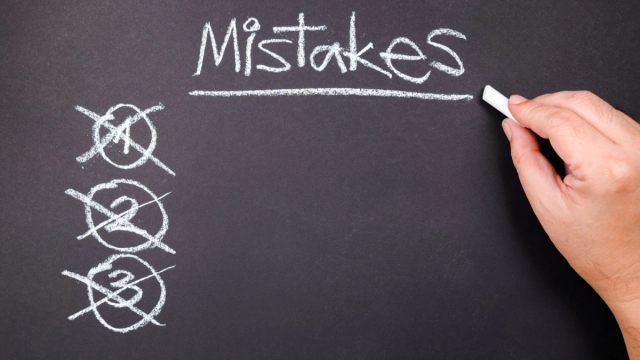Why Customer Education Is Key for Successful HVAC Sales
A solid customer education strategy can help you meet customers where they are in the buying process and make sure they get what they need from their project.

The HVAC industry has seen significant changes over the past decade — everything from new rebate opportunities to evolving technologies like A2L refrigerants, heat pumps, and IAQ upgrades. Even for those of us in the industry, it can be a lot to take in. But what about your customers, who only think about their HVAC system when something goes wrong?
That’s why customer education is an important step in the sales process. When customers know what they’re buying and why you’re encouraging them to buy it, you build trust, increase satisfaction, and make more informed sales.
Why Is Customer Education Important?
Customers are interested in learning about the products they’re purchasing, and in this digital age, they have more information (and misinformation) at their fingertips than ever before.
With the flood of online resources and the option to purchase directly from Amazon or direct-to-consumer HVAC companies, you’re often dealing with a customer who’s done their homework but may be more skeptical of your recommendations.
For many, this is their first time, or first time in a long time, buying an HVAC system, and they’ll need expert guidance. A solid customer education strategy helps you meet customers where they are in the buying process and position yourself as the trusted consultant for this project. By educating them, you can make sure the customer gets what they truly need, not just what they think they need.
Using Customer Education as a Sales Strategy
Customer education is more than teaching your customers about your product. It starts with your first interaction during the HVAC sales process. Educating your customers puts them in the driver’s seat, while you’re there to guide them to their destination.
Identify Buyer Types
Knowing how customers approach purchasing decisions can help you steer them in the right direction. Generally, there are three types of HVAC customers: The Spendthrift, The Researcher, and The Frugalist.
- The Spendthrift is your impulse buyer, driven by emotion and a desire for the latest features. Educate them on how a product will enhance their lifestyle. For example, you could highlight how smart thermostats offer convenience and control right at their fingertips. Focusing on the ease of managing their home’s temperature remotely can appeal to their desire for both comfort and cutting-edge technology.
- The Researcher has done their homework but still needs your expertise. As mentioned, their research could be based on misinformation. To win their trust, use data and statistics to support your recommendations and fill in any gaps. By backing up your advice with solid information, you help them feel confident in their decision and reinforce your role as the expert.
- The Frugalist wants the best bang for their buck, but that doesn’t mean they’re unwilling to invest upfront for long-term savings. Educate this customer on how products can save them money over time, and highlight any rebates or incentives that can reduce the initial cost. By showing them the long-term financial benefits, you can help them see the value in spending a little more now.
Independent research and online purchases can’t replicate the level of personalized experience you can give your customers by meeting them where they are.
Encourage Product Adoption
After you’ve identified your customer’s buyer type, you can use that knowledge to guide them toward product adoption. According to Northpass, a leader in customer education, your customers are more likely to use and promote your product when they know how to use it and understand its value.
Take heat pumps, for example. A study conducted by ACHR found that 80% of homeowners have heard of heat pumps, but only 50% understand what they do. They took the research a step further and found that only 4% know that heat pumps can heat a home when it’s -4°F.
Customers may know what a heat pump is and may even purchase one without education. But imagine how customer education could change day-to-day interactions. Your customers can now tell their friends and family that they got a heat pump and explain the value it brings. Their advocacy could, in turn, lead to more referrals and more business — all from the simple investment of educating your customers.
Educate Customers on the Benefits of Repairing vs. Replacing
As you well know, sometimes repairing a system isn’t worth it for the customer. HVAC systems can reach a point where it makes more sense to invest in a new system rather than repairing an old one. But the price tag for a repair is very different from that of a new system, which can be difficult to digest.
Breaking down the cost and educating the homeowner on the benefits of the replacement can help ease the sticker shock. Be sure to include the system’s lifetime savings as well. For example, their old system is likely ineffective, which ultimately increases their utility bill. By investing in a new, energy-efficient HVAC system, they will see a lower utility bill and fewer repairs, especially if they add on a service contract.
These discussions are also great opportunities to educate your customers on financing options. Financing options can help break up a large purchase into smaller, more manageable payments, potentially saving the sale. With the right payment plan, a customer who thought they could only afford a repair may be able to afford the new system they need.
 Sales StrategyUsing Seasonal Specials to Boost Your HVAC Business Year-Round
Sales StrategyUsing Seasonal Specials to Boost Your HVAC Business Year-Round Sales StrategyThink Like a Customer: The Psychology Behind Closing More HVAC Deals
Sales StrategyThink Like a Customer: The Psychology Behind Closing More HVAC Deals Sales Strategy, Financing Essentials3 HVAC Mistakes That Are Costing You Money
Sales Strategy, Financing Essentials3 HVAC Mistakes That Are Costing You Money